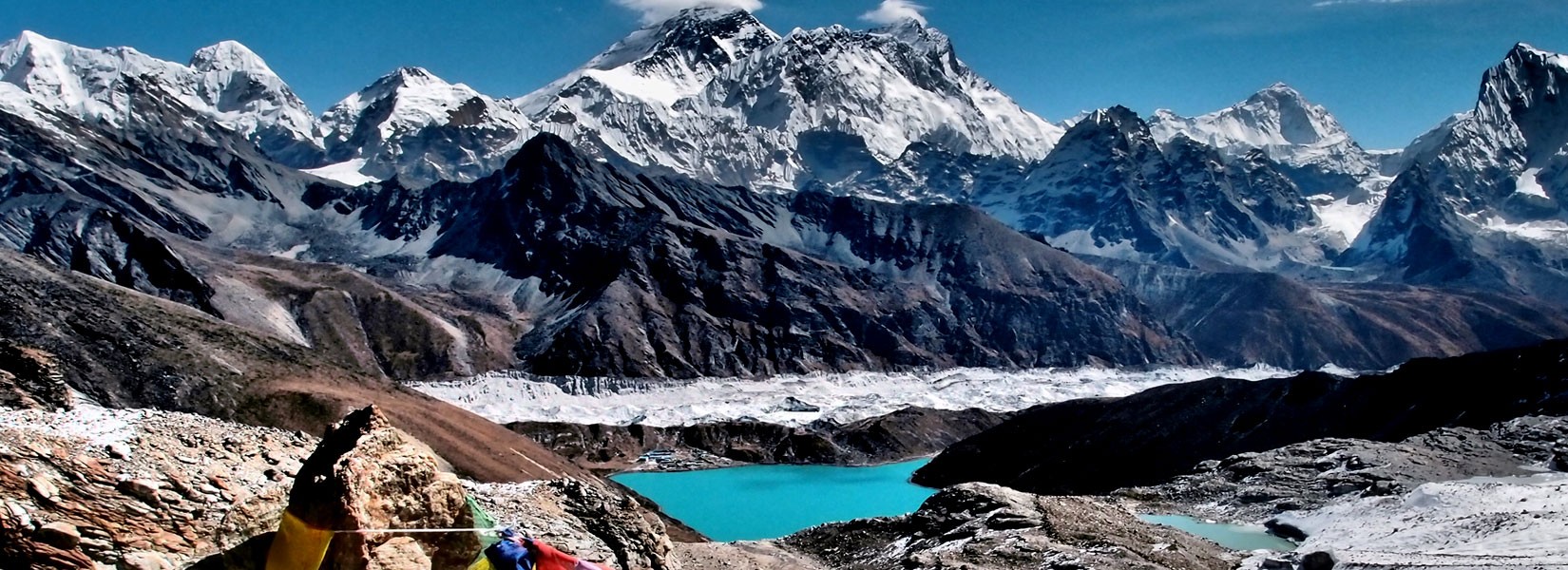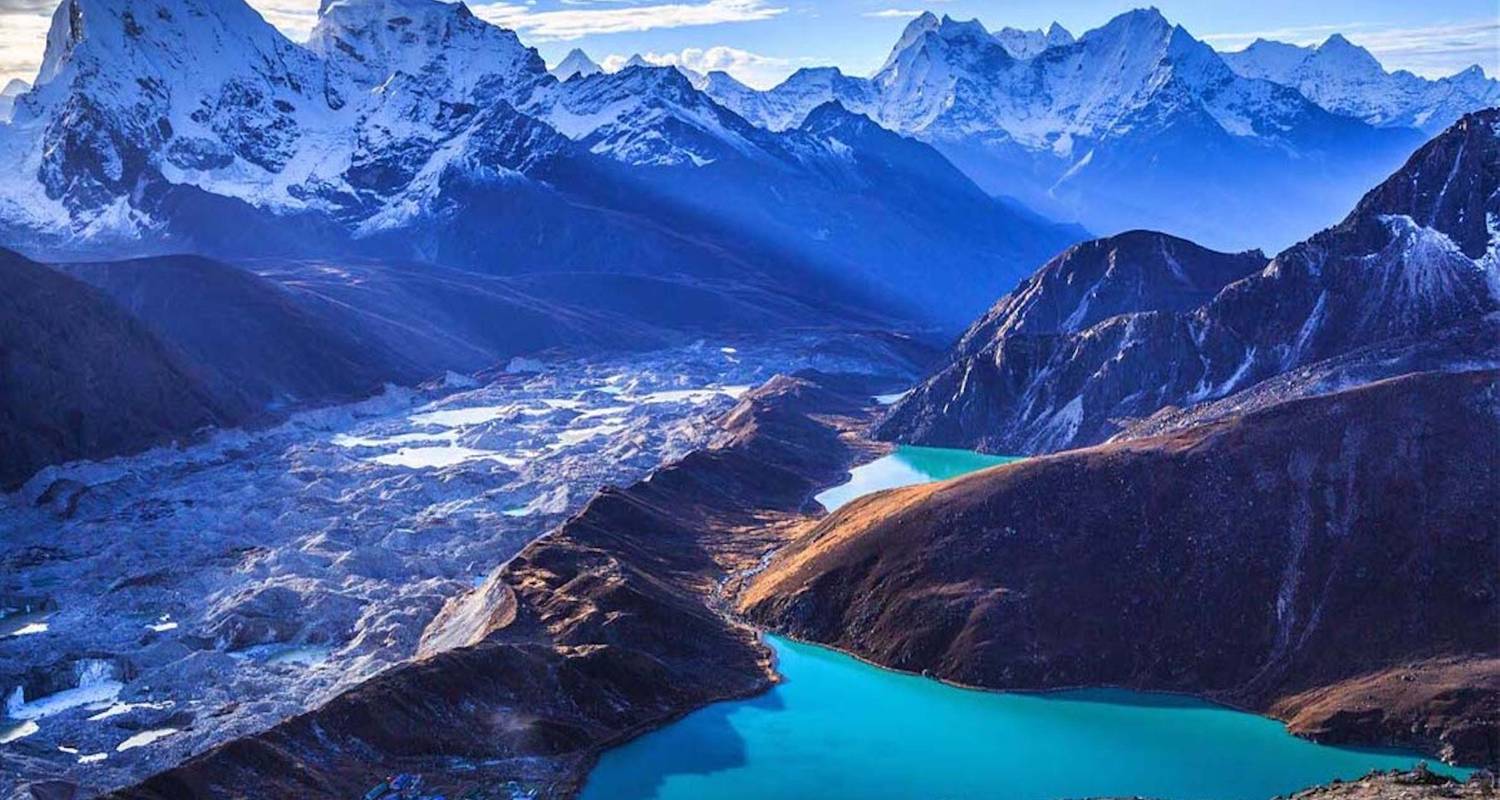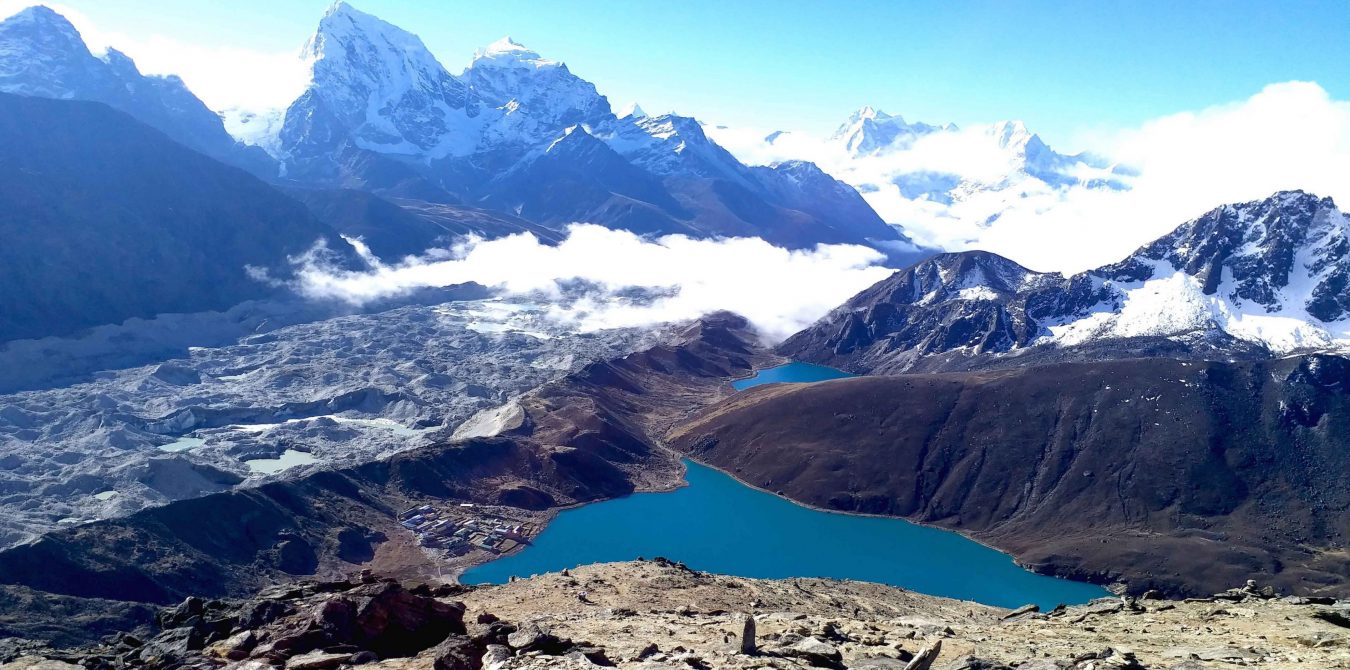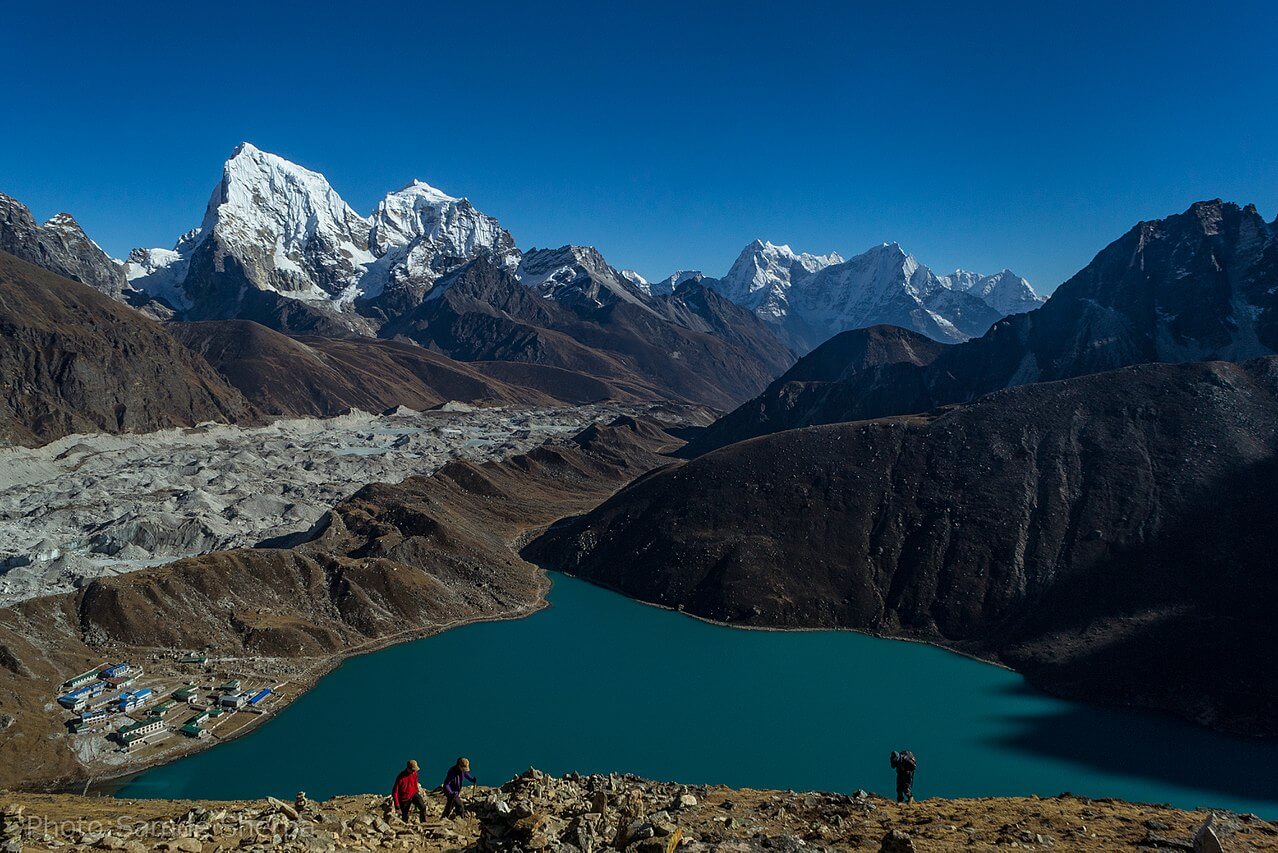Gokyo Ri Nepal : The highest lake in the world
Gokyo Ri Gokyo Ri falls within the Everest National Park. It is listed as a World Heritage Site. Nongjongba is the longest glacier in Nepal. Once there, the 360-degree panoramic view captivates everyone. There are a total of five lakes in this area.
Gokyo Ri Lake is at 5,360 meters. Lhotse, Choyu, Makalu mountain ranges including the world’s tallest Mount Everest can be seen in this place.Gokyo has a peak at 5300 meters, which is called Gokyo-ri. It is easy to climb, although extreme heights have an effect.
As you climb up, you get a panoramic view of Lake Gokyo. At the same time it was discovered that there is a small wall behind the hotel, with the Nagojumpa Glacier.Everest is also visible from Gokyo-ri. Looks like these clouds won’t let you see Everest.‘Gokyo Ri Lake offers views of Mount Everest, Makalu, Choyu and Lhotse Mountains, and is also a mountain route in itself.
It takes three days to reach Gokyo Ri from Namche. Dashain and Tihar are considered to be the best time to visit the place.During Dashain and Tihar holidays, it is considered a good time for Nepalis to visit the place. You can go to Lukla plane from Kathmandu and return to Kathmandu in 10 days .Gokyo Lake, which is the source of Dudhkoshi, looks different in day, night and evening.

Gokyo Ri
Reaching the Everest base camp via Gokyo Lake is also a very challenging route. However, it is considered to be the main trekking route as it is the choice of everyone. Gokyo Valley, Gokyo Ri, Gokyo Chola Pass, Everest Base Camp, this footpath is considered one of the most dangerous in the world. On this journey, you can see Mt.Everest.
Gogyo Lake is visited by observing the original culture of the people of Lukla, Fakding, Monjo, Jorsalle, Namche, Mongla, Dole, Marchemu, Dole and Force villages.
This is a 3-4 day trek. Very quiet, clean. Not even a crowd. The opportunity to walk along the glaciers and lakes is found in this trek. There is also a valley here. There is also a river. That has to be overcome. You can walk through the mountains. There are grooves, there are also big grasslands. There are very attractive mountains. Isn’t the mountain view on this trek less fascinating?
This trekking experience at an altitude of about four thousand meters requires hiking experience. As it is a bit difficult to walk, you have to travel carefully. You have to walk through the snow while crossing the ‘Amfulapcha Pass’. Other times it doesn’t happen. Snow is the only way to walk in the snow.

Gokyo Ri
Of course, mountain destinations are also a bit expensive. And, you have to gather a lot of courage. But, the joy of getting there is amazing. I really like Khumbukshetra’s Gokyo Ri. Also, my favorite destination is Amfulapcha Pass. This pass also falls in Khumbu area. I have to walk from my peak to Baruchche Himal.
Nepal is an attractive destination for adventure tourism. From trekking, cruising to mountaineering, Nepal has been identified as an attractive destination.
There are six main lakes in the region. These lakes are among the highest freshwater lakes in the world. Thonak Lake is the largest of these lakes. Since 2007, the 7,770-hectare (approximately 30-square-meter) area of Gokyo Lake has been declared a Ramsar site.
Religious significance of Gokyo Lake:
Gokyo Lake is considered pure and sacred by both Hindus and Buddhists. More than 1,000 Hindus bathe here every year on the day of Janapurnima in August. On an average, more than 7,000 tourists visit here every year. To the south of this lake is the temple of the Hindu gods Shiva and Vishnu. Where thousands of devotees come. This place is famous for its special snake deity.
The Gokyo Ri Lake range, located in the Khumjung Village Development Committee of Solukhumbu, a mountainous district in Nepal, is considered to be one of the most important wetlands in the highlands of Nepal. The Gokyo Lake range is part of the World Heritage-listed Everest National Park. The six lakes in the range are stretching from 4,700 to 5,400 meters above sea level. The Ngozomba Glacier, known as the longest glacier in Nepal, stretches parallel to this lake range.
The third of the six lakes in the Gokyo Lake series is known as Gokyo Lake. It is also known as Gokyo Cho, Dudh Daha etc. Gokio Lake, spread over an area of about 43 hectares, is the deepest lake in the range. Gokyo Lake is also the most important lake in the range from a religious, cultural and tourist point of view. The lake and its environs are sacred sites of religious and cultural significance to both Buddhists and Hindus.
Of the lakes in the Gokyo Ri range, there is no direct correlation between Gokyo IV, V and VI. But Gokyo comes from the third to the second and from the second to the first. The last drain of water comes out from Gokyo first. The water released in this way combines with the water coming from the Ngozomba Glacier to form the Dudhkoshi River. The Dudhkoshi River flows down from there and joins the Imjakhola, Bhotekoshi and finally Saptakoshi rivers. And after reaching Saptakoshi river in India, it merges with Ganga river. Seen in this way, the Dudhkoshi river flowing from the highlands is sacred.

Gokyo Ri
The Gokyo Valley is famous not only for its beautiful lakes but also for its views of the world’s highest peaks, mountaineering, wildlife and bird watching. Known as ‘Gokyo Ri’ at the head of Gokyo Lake, the Gokyo Lake Range and Mount Everest can be seen from a high point, so tourists visiting the Gokyo area also climb ‘Gokyo Ri’. About one-third of the world’s major tourist destinations in Nepal’s Everest National Park are visited by tourists.
In this Gokyo Lake area, which is under a lot of pressure from tourists, along with the increase in the number of tourists, the destruction of the environment has also increased. In this region, environmental problems such as deforestation, overgrazing, pollution and garbage problems, soil erosion, encroachment of lakes, global warming and melting of snow have gradually emerged. The Himalayan region is considered as an indicator of climate change. The Gokyo area can be taken as a vivid example of this. The water level in Gokyo Ri Fourth and Fifth Lakes is decreasing.
The Ramsar Convention is a convention held on February 2, 1971 in Ramsar, Iran, to protect wetlands of international importance, especially the habitat of water ducks. The Ramsar Bureau declares the world’s wetland to be the most unique and most important wetland in the world. The vision of the United Nations Educational, Scientific and Cultural Organization (UNESCO) as the custodian of the Ramsar Convention is to increase international cooperation at the local, regional and national levels.

Gokyo Ri Worldwide active in conservation, an international non-governmental organization, W.W. Various programs have been conducted with the objective of long-term management of Gokyo Lake Range with the participation of Efles, Everest National Park and locals. W.W. Under F’s initiative, the locals have formed an ‘Gokyo Lake Management Group’ and are actively involved in the conservation of Gokyo Lake.
FAQ’S
Where is Gokyo Ri?
Is Gokyo Ri safe to travel?
Comment Here!